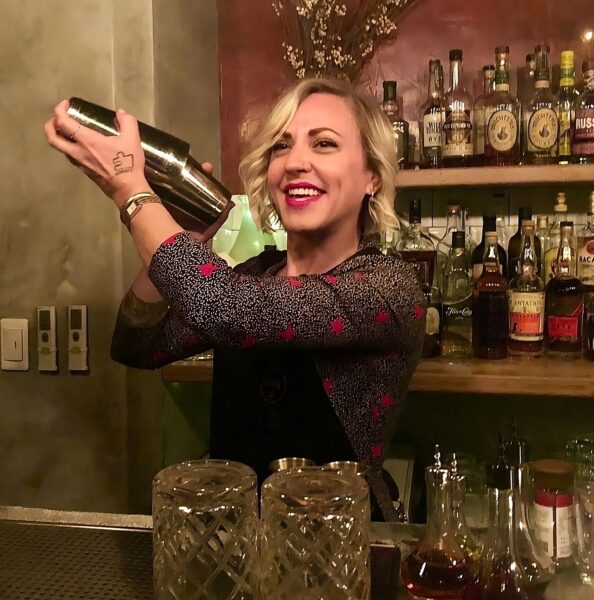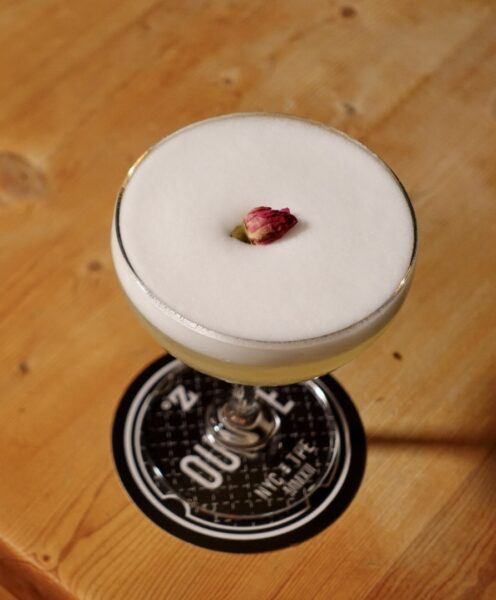In Taiwan, drinking revolves around food. There’s no pairing tradition like that in the West which recommends Cabernet Sauvignon and steak or Chablis and oysters, yet very few drinks are imbibed without some kind of solid food. During the warmer months, cold beer goes well with flavourful dishes like three-cup chicken (so called because it’s made using equal amounts of soy sauce, sesame oil, and Shaohsing Chiew). If people are knocking back stronger stuff such as kaoliang, you can expect to see snacks like peanuts and watermelon seeds.
Never heard of Shaohsing Chiew and kaoliang? The former is a rice-based ‘yellow wine’ used mainly in cooking. Since 1945, more of the latter has been drunk in Taiwan than any other spirit. The English name kaoliang derives from the Chinese word for sorghum, one of the two grains — the other being wheat — from which this clear but fiery beverage is made. Several types of kaoliang are produced in Taiwan; some of the most famous are from the Kinmen and Matsu archipelagos.
For most of the 20th century, alcohol production was a government monopoly. Since Taiwan joined the WTO in 2002, the market has opened up and kaoliang has lost market share to imported spirits. Hoping to attract a new kind of customer, the makers of kaoliang now promote it as a base for cocktails.
Native libations, Japanese refreshments
Any outline of Taiwan’s alcoholic drinks should begin with the island’s indigenous people and their traditional millet-based wine. Modern versions aren’t hard to find in popular destinations like Alishan and in aboriginal communities in Pingtung County. Travelers hoping for something to drink while enjoying some hearty indigenous fare during a Life of Taiwan private guided tour might well be relieved to know that these days millet wine isn’t made according to truly traditional methods, in which human saliva performs the same function as yeast.
A Dutch missionary who served in the Tainan area during the 1630s reported seeing indigenous women heat up millet paste, chew it, and then spit it out into a pot. There it was left to ferment and mature for at least two months. The longer it was kept, the more pleasant it tasted, he wrote, suggesting he tried it on more than a single occasion.
Given the popularity of saké among the Japanese, you might imagine setting up a saké brewery would have been a priority after Japan seized control of Taiwan in 1895. However, because it required refrigerated manufacturing facilities, saké production didn’t begin until 1914. The brewery in central Taipei was finally shuttered in the 1980s, then repurposed as Huashan 1914 Creative Park, a venue for cultural activities.
TTL, the state-owned company created after World War II to manage the island’s various alcohol and tobacco businesses, now makes a variety of inexpensive sakés not far from Taipei in Taoyuan. They range in strength from 13.5 to 15 percent. Most are made from ponlai rice, the variety that was developed in Taiwan almost a century ago to suit Japanese consumers, and which now accounts for the bulk of the rice grown across the island. Located just outside Taichung, Wufeng Farmers’ Association has won awards for its premium sakés. It now also makes a shochu that’s 46-percent alcohol by volume. Unlike saké, shochu is produced by distillation and sometimes used as a base for mixed drinks.
Fancy a wee dram?
TTL also makes and sells gin, vodka, and rum. Surprisingly, given the size and importance of the sugar industry in Taiwan before the 1980s, the last of these has never been especially popular. During the early postwar period, the spirit usually drunk by rural Taiwanese was thai-peh-chiu, produced from a mash of rice or sweet potatoes or both. Only in the past few years has one entrepreneur revived the tradition of making a sweet potato-based alcoholic beverage; by finding a use for sweet potatoes which — because of their size, shape, or appearance — can’t be sold to retail customers, this boosts farmers’ income while also cutting food waste.
For the last few decades, the spirits segment of Taiwan’s booze market has been dominated by whiskies, brands from Scotland and Japan being consistent best sellers.
Taiwan’s first whisky distillery is part of the King Car conglomerate, makers of the massively-popular Mr. Brown canned coffee. Established in Yilan and named Kavalan — the old name of that county — it released its first products in 2008. They’re not cheap, prices for a 700ml bottle ranging from GBP75 to over GBP300 (US$98 to 393), but these single malts have won numerous awards in the US, the UK, and elsewhere. If you’ve a whisky-loving friend back home, a bottle of Kavalan could very well make the perfect gift.
Unlike Scotch whiskies, Kavalan products don’t carry age statements. Because Taiwan’s climate is far warmer than Scotland’s, whisky matures more quickly. For the same reason, Kavalan has to contend with an ‘angel’s share’ (evaporation during maturing) of up to 15 percent, at least triple that experienced by Scottish distilleries.
Thirst-quenching brews
TTL has been selling Taiwan Beer since 1946 but only since the 1960s has the recipe included the ingredient that helps give this German-American-style amber lager its perenially popular taste: ponlai (japonica) rice. Of course, it isn’t the only lager partly made of that grain, as several Japanese brews and even Budweiser contain some rice. Heavily carbonated and very slightly sweet, ‘classic’ Taiwan Beer is 4.5-percent alcohol and sold in distinctive white-and-blue cans. Taiwan Gold Medal Beer is slightly stronger, a tad more expensive, and named because it has received several Monde Selection awards.
Since TTL lost its monopoly a couple of decades ago, big-brewery imports such as Heineken and Japan’s Kirin have become ubiquitous. But far more interesting for the traveling beer connoisseur are Taiwan’s two dozen or so craft beer makers. Getting obscure beers onto supermarket shelves is near impossible, so to get around bottlenecks in the distribution system, several of these breweries sell their products via the internet, by special order through convenience-store chains like 7-Eleven, or by partnering up with hotels and restaurants. Le Ble D’or has taken a different approach. Since 2004, it has expanded to a chain of 14 beerhouse locations around Taiwan which serve a range of stir-fried dishes, pizzas, and vegetarian dishes washed down with its own IPA, dark lager, honey lager, and other brews.
Cocktail culture

‘Cocktail culture is Taipei is growing tremendously’, she says. ‘Lots of bars have opened recently and the scene here is getting attention from all over the world. The cocktail crowd seems to be the younger generation, and they mostly go for clarified cocktails, using equipment and techniques to make their own flavors. Taiwanese ingredients tend to be used the most, including local gins and whiskies. Kaoliang is rarely used in cocktails, as it’s more for the older generation that drinks it straight. Tea cocktails in particular are very popular’.
‘I’d say that the biggest difference in flavours from the Western cocktail culture is the absence of bitter, herbal, and spice (cinnamon and ginger). Few Taiwanese enjoy these flavors. Often they say it reminds them of Chinese herbal medicine! So they go for more sweet or sour style drinks. In this respect, local cocktail culture is like that in Japan which is more dry and sour’, she adds.
Eager to explore the world of food and drink in Taiwan? Contact us today so our itinerary designers can begin planning your Taiwan tour of a lifetime!

